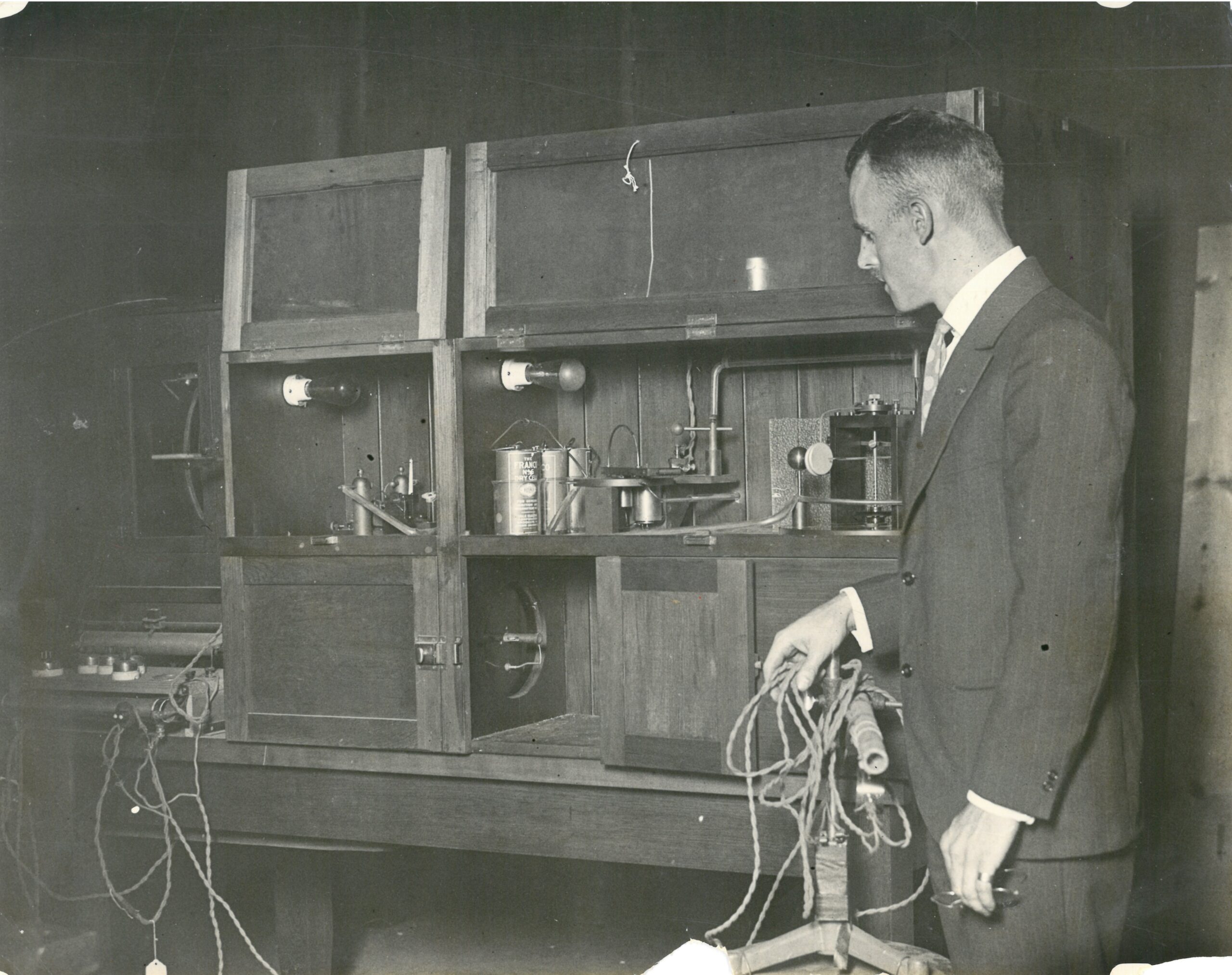There was a time when the American gun culture did not include—or need—a political advocacy component. A diverse “shooting fraternity” thrived in the open without much notice, quietly intertwining individuals’ interests in shooting, hunting, ballistics, physics, mechanics and sport. There was no stigma attached to the length of a barrel, the use of a sound muffler or ordering by mail from an ad in Boys’ Life magazine. The phrase “gun culture” did not yet exist, because a special term was unnecessary. It included, then as today, not just hunters, competitive shooters, police or military, but also those who wore a suit and tie or a lab coat to work every day.

Philip Pollock Quayle was one such person—a scientist, inventor, marksman, husband and father. The scientific research and techniques he developed in his too-short life directly advanced our understanding of ballistics and were successfully applied to the design and manufacture of ammunition and firearms. In a 1931 American Rifleman obituary, he was described as “first and foremost a most highly educated and talented scientist” whose work “forms a contribution to ballistic science which will remain forever a monument to his memory.”
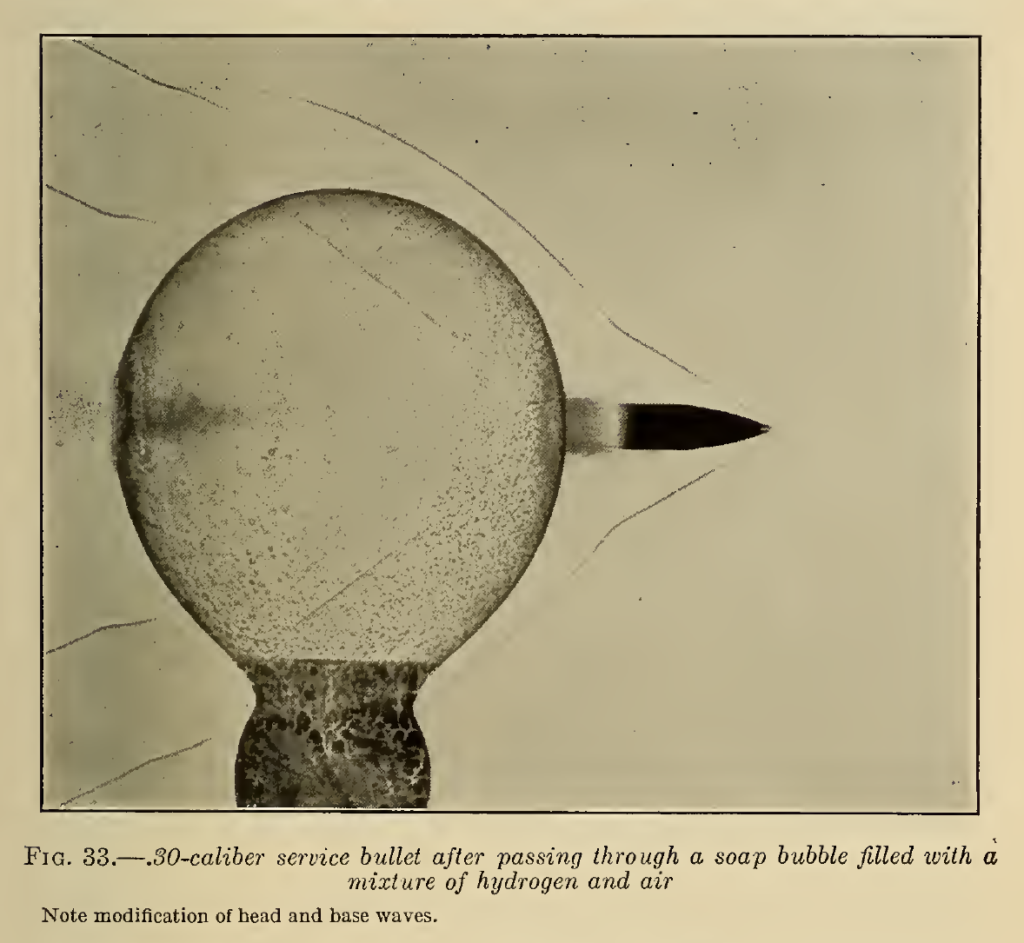
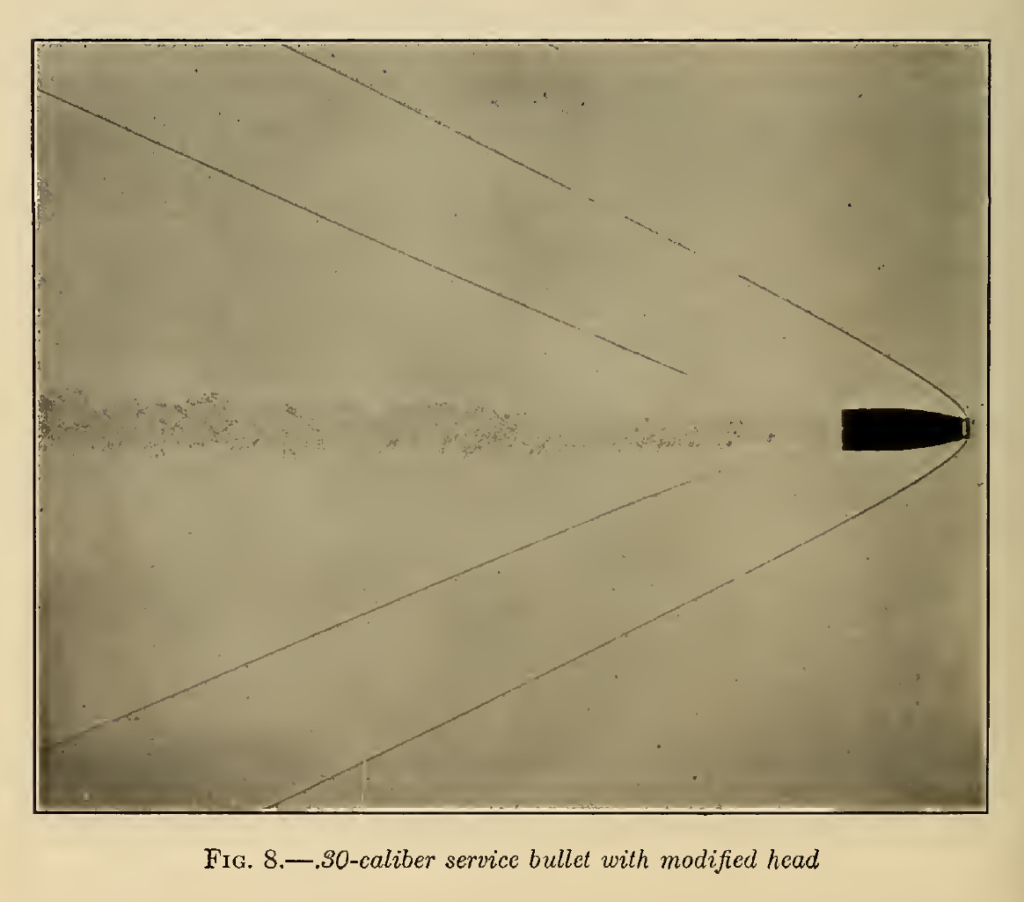
Born in 1894 in Berea, Ohio, Philip Quayle’s family eventually settled in Oberlin, where he graduated from high school in 1914. Philip was not a child prodigy. He turned 20 before graduating from high school; although this was common for the time. He pursued higher education part-time at Oberlin College and then-named Case School of Applied Science in Cleveland while working, until the U.S. declared war on Germany and entered the First World War in April 1917. Philip joined the enlisted Reserve Corps in early 1918 and was called to active duty later that year.
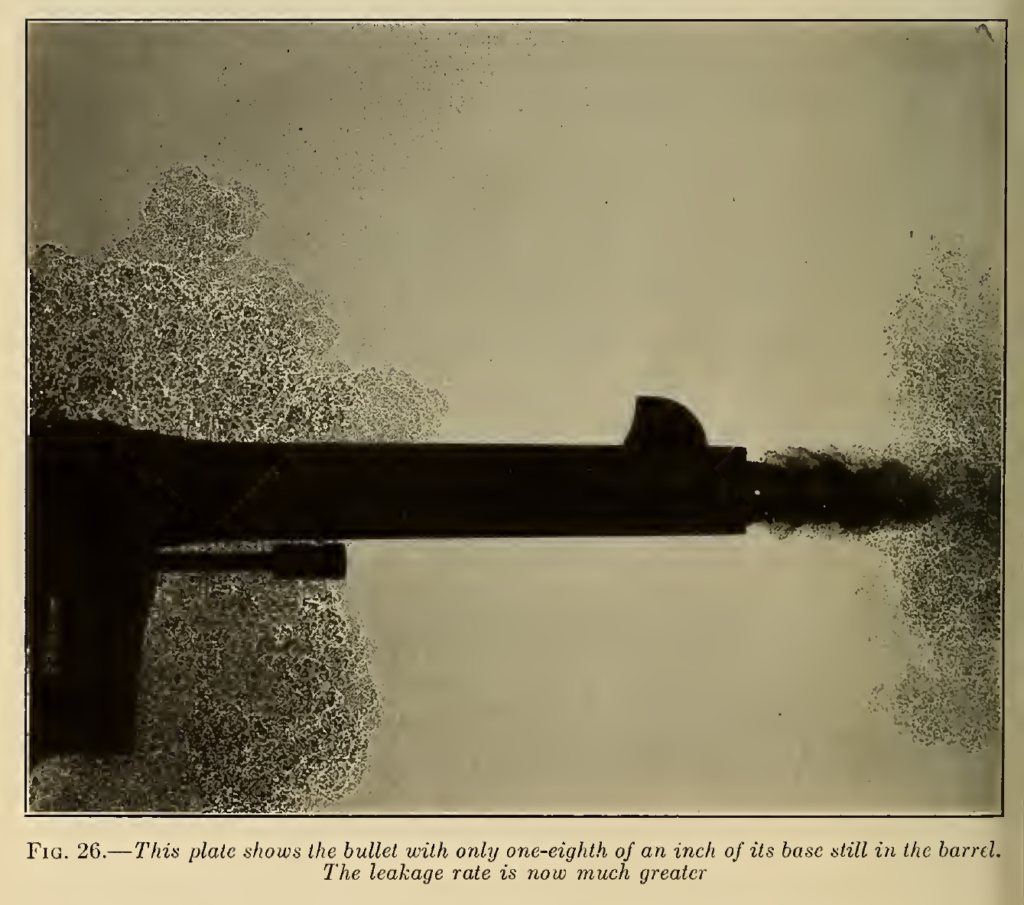
He immediately earned the Army’s “expert” marksmanship medal, the highest level recognized, and was soon sent to Coast Artillery School at Fort Monroe, Virginia. There, he was trained in tactics and the mathematics of heavy arms ballistics. Philip’s older brother, 1st Lt. Thomas J. Quayle of the 135th Machine Gun Battalion, was killed that month in France during the first phase of the Meuse-Argonne Offensive. But the War officially ended on November 11, before Philip could be deployed to Europe. Though he was in line to become a lieutenant, he was honorably discharged 10 days later as a private.
As a boy, muzzle loading arms had been his hobby. Whether artillery school was where Quayle’s passion for ballistic science was born, or simply where it was fueled, we don’t know. But from that point, the course of his academic and professional career was set on a trajectory from which it never drifted. When Philip returned to Case School, his studies in physics became highly focused. Quayle co-authored a presentation given in Washington in 1920 to the American Physical Society on the “Photographic Study of a Bullet in Flight and of the Resulting Air Disturbances.” The study used a rudimentary form of photography to learn the relation between dimensions of the projectile and the wave-length, frequency, pressure and form of waves in air produced by the projectile in flight. As a student, he worked on a project for the Army to study the effects of concussion sound waves from large guns. At the time, the physiological effects of air concussion were believed to be the cause of the malady vaguely referred to as “shell shock.” The results of this work formed the basis for Quayle’s later work perfecting “spark photography.”
Spark Photography
In 1921, Quayle graduated from Case with a bachelor’s degree in physics and married Mary Tillotson, an Oberlin native with whom he had graduated high school seven years earlier. Philip was hired by the National Bureau of Standards, Sound Division, in Washington, D.C., as an assistant physicist. There, he designed test equipment, studied problems affecting industry or consumers and published papers on practical scientific solutions. He immediately poured his passion into perfecting spark photography, applying it to firearms research and writing on spark photography, ballistics and measurement of very small increments of time.
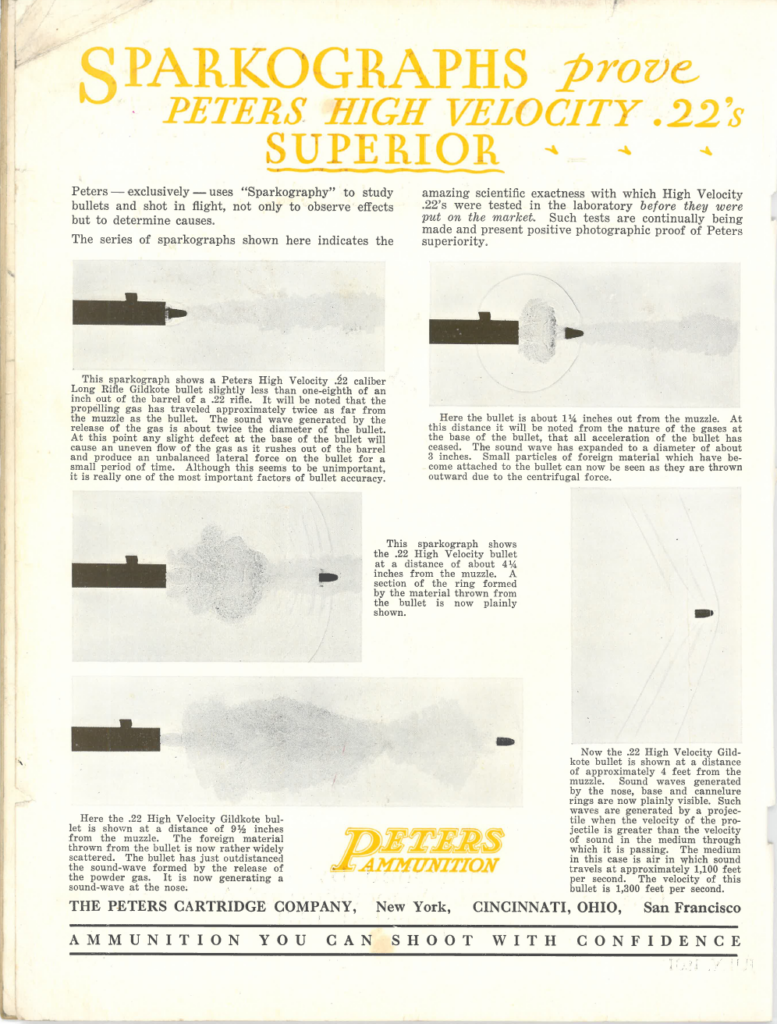
His lab and test equipment were largely built from scratch. The first of Quayle’s important breakthroughs for perfecting spark photography was a trigger that was neither mechanically linked to the firearm nor touched by the bullet, so it did not interfere with the bullet’s flight. The second was a switch that would release a half-kilowatt, 10,000-volt charge at a precise moment in time to create the illuminating spark. Trained in applied science, Philip was a physicist who invented scientific instruments to not just show, but accurately quantify, effects of external ballistics and recoil.
The latest in ballistic technology at the time was the Aberdeen Chronograph. It used lead-foil screens placed 50 feet apart. When a projectile pierced each screen, a spark was triggered and recorded, allowing the time between sparks to be measured. But any system that relied on physical contact with the projectile inherently introduced error and affected its flight.
Spark photography seems crude in the sense that there is no camera box, shutter or lens used to focus light reflected from the subject. Instead, it records an actual size shadow of an object on a photographic plate frozen in time by the light from a spark. Advantageously, it creates useful images of phenomena not otherwise visible, such as pressure waves and turbulence in air, and reduces the frame speed to as little as 1/one-millionth of a second. What appears in the spark photograph to be billows of smoke from the muzzle are invisible streams of compressed air.
Today, high-speed video can record at more than 50,000 frames per second. But in the 1920s, moving pictures were still a rapidly developing novelty. Flashbulbs were not produced commercially until 1929, and the first electronic flash tube wasn’t introduced until 1931. The electronic flash was a direct evolution of spark technology, but slower—at only 1/200th to 1/1000th second. Early flashbulbs took longer to reach full brightness and burned for longer than electronic flashes.
While in Washington, Philip became active in the USMC Reserve, and by 1925 he was a captain. That year, the Bureau published what was to be Quayle’s most notable and recognized work: Spark Photography and Its Application to Some Problems in Ballistics. His articles were not written as an academic in an ivory tower but shared practical uses for discoveries he made and the devices he had built to make test equipment more accurate. His articles were published in both scientific journals and popular magazines. For example, The Coast Artillery Journal published “Spark Photograph of a .30 Caliber Tracer Bullet,” in October 1925 and the American Rifleman published “Some Spark Photographs, Recoil and Pressure Curves of the 0.45 Caliber Colt Automatic Pistol,” in February 1926.
Since the 1897 publication of an article by 1st Lt. B.W. Dunn in the Journal of the United States Artillery, it had been widely accepted that the speed of a projectile continued to accelerate after leaving the muzzle. The article asserted: “Small arm bullets should be considered as having their maximum velocities at points from 20 to 30 feet in advance of muzzle. They should gain in velocity over this distance, for the bullet is enveloped in gases moving in the same direction and with higher velocity than that of the bullet.” Quayle’s spark photo instrumentation and analysis definitively proved that a bullet does, in fact, accelerate beyond the muzzle—but for only 3 to 4 inches.
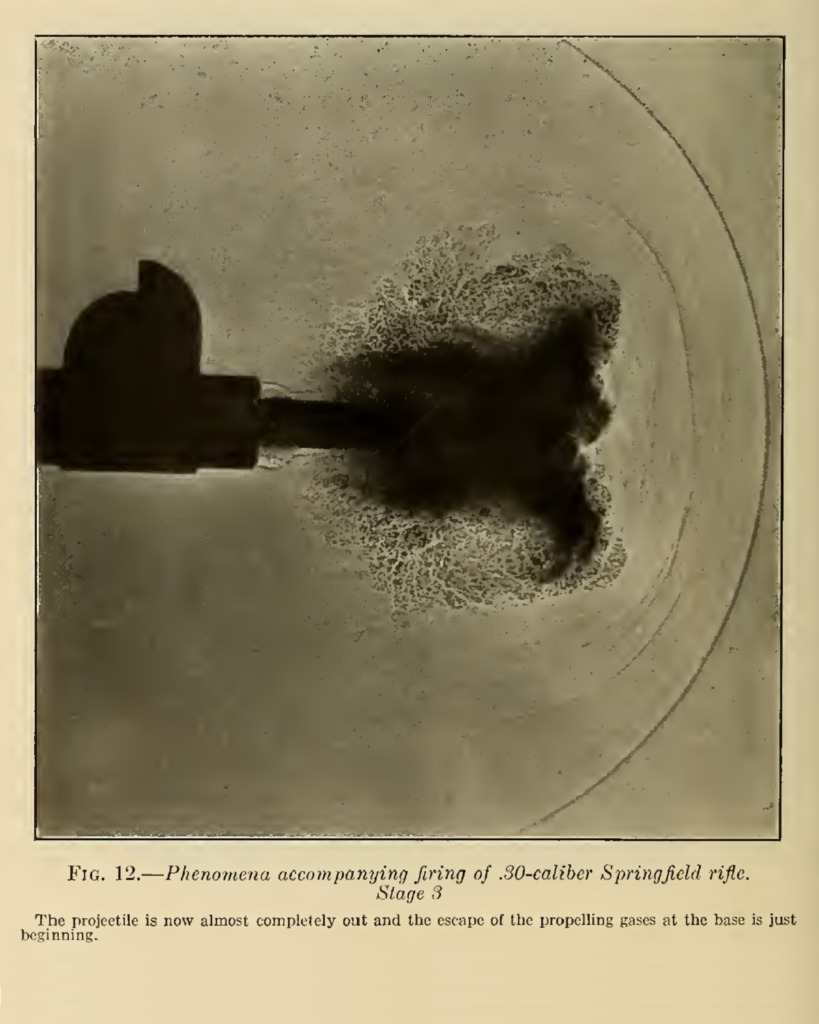
Critically important to ballistic study—and many other fields at the time—was the ability to measure very small increments of time accurately. While at the Bureau, he invented an electric tuning fork for precision measurement of small intervals of time and a pendulum device to measure a gun’s recoil.
Peters Cartridge Company
Peters Cartridge Company opened in 1887 on the banks of the Little Miami River in southwest Ohio. Gershom Peters had patented the first fully automatic machine to load metallic cartridges. Peters was an innovating company and aggressive promoter. It ran magazine ads, published informational booklets for shooters and sponsored shooting demonstrations and trapshooting events. In 1927, Peters was celebrating its 40th year in business when it hired Philip Quayle to be its Chief Research Physicist. He had become well-known for his ballistics research at the Bureau of Standards and was undoubtedly the most qualified person in the country for the position.
Philip jumped right in, developing inventions and test equipment to improve Peters’ ammunition. Peters already had a chemistry laboratory and an all-season test tunnel. Philip built a complete spark photography lab, an electric tuning fork for timing and a ballistic pendulum for testing recoil. Peters made full use of Quayle’s work and equipment in its marketing and promotions, though without mentioning Quayle by name. Peters encouraged its employees to engage in shooting activities and provided ranges for them near the factory. Philip shot in local and regional matches and enjoyed taking his young son, Tom, to shoot skeet.
Measuring the longitudinal distribution of shot pellets and length of the shot string in the direction of travel is more difficult than using a simple patterning board. Quayle invented a shot string meter (Patent No. 1,807,601) that allowed just that. But Philip soon was able to photograph an entire shot string, which provided even better information.
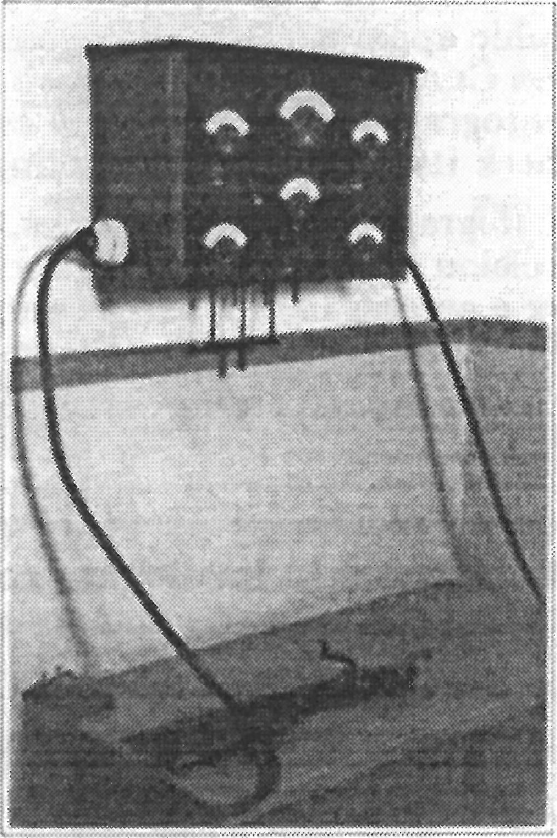
In 1926, Col. Richard M. Cutts and his son patented a “climb arrester” for rifles. Muzzle-climb was a particular problem for the M1921 Thompson submachine gun in full-automatic mode. The younger Cutts began working on a “compensator” that would the vent the muzzle blast generated by the propellant gases upwards, helping to counteract the Thompson’s muzzle-climb. Determining the effectiveness of the designs was a challenge, so in 1927, Cutts approached Peters for help.
Quayle used his spark photography and other instruments he had invented to analyze shots and recoil of the Tommy gun. Philip published articles on these tests in both American Rifleman and Leatherneck—Magazine of the Marines in 1927. Col. Cutts’ account was published in the American Rifleman in July 1928. “This allowed us to see the results of the changes we were making in the design of a compensating device,” the junior Cutts later related. He described Quayle as both “a very able physicist” and “a gun crank who believed anything less than the best in firearms was no good at all.” The “Cutts Compensator” patents were licensed and became a standard fixture on the Thompson from 1927 onward, known as the M1921ACs.
Handloaders know the importance of selecting the right primer for the powder charge and case shape. The magnitude and length of the primer explosion affect how the propellant powder burns. The duration of an average rimfire primer, for example, is about 2 to 3 ten-thousandths of a second. Of course, consistency of one primer to the next is just as important. Quayle invented a device (Patent No. 1,824,407) to quantify both the intensity and duration of an explosion, specifically for the testing and design of primers and blasting caps. A photo of the device was shown in Peters’ 1930 pamphlet, “From Trigger to Target.” This allowed Peters to ensure consistency of its products and to rate primers quantitatively relative to other primer types.
The hot gas produced by the primer is conductive; conductivity of the gas is affected by both pressure and temperature. One electrode is attached to the metallic shell of a primer or a primed rimfire case. The other is positioned with a gap in front of or inside the case. When the hot, high-pressure gas is released, the conductance is recorded to indicate both duration and intensity, the latter being only relative and without any standard unit of measurement.
Quayle’s Blank
The earliest motion pictures were silent and often projected in a traditional “stage” theater where the film was accompanied by live music. Later, sound tracks were recorded to be played along with the films, but the degree of synchronization was generally limited to music, with the dialogue still being presented in text frames inserted between images of the actors. Gunshots in silent movies were visualized by using blanks with a powder charge formulated to produce the desired flash and smoke. The sound they produced was immaterial.
The first full-length “talkie” was released in 1927 (“The Jazz Singer”). By 1930, almost all movies included full sound, and westerns and gangster stories immediately became popular genres for talkies. Initially, the challenge in adding voice sounds to motion pictures was synchronization. Timing a music soundtrack or narration to the pictures was simple compared to synchronizing the lip movements with the actors’ voices. To make dialogue sound exactly synchronized to the image, it had to be recorded live as the scene was being acted and filmed. Microphones sensitive enough to record voices at a natural level would be damaged by a loud gunshot. If the powder charge used in the blanks was reduced enough to be microphone-safe, they no longer sounded like a real gunshot. The industry needed a blank cartridge that produced a credible tone but at a lowered amplitude (volume).
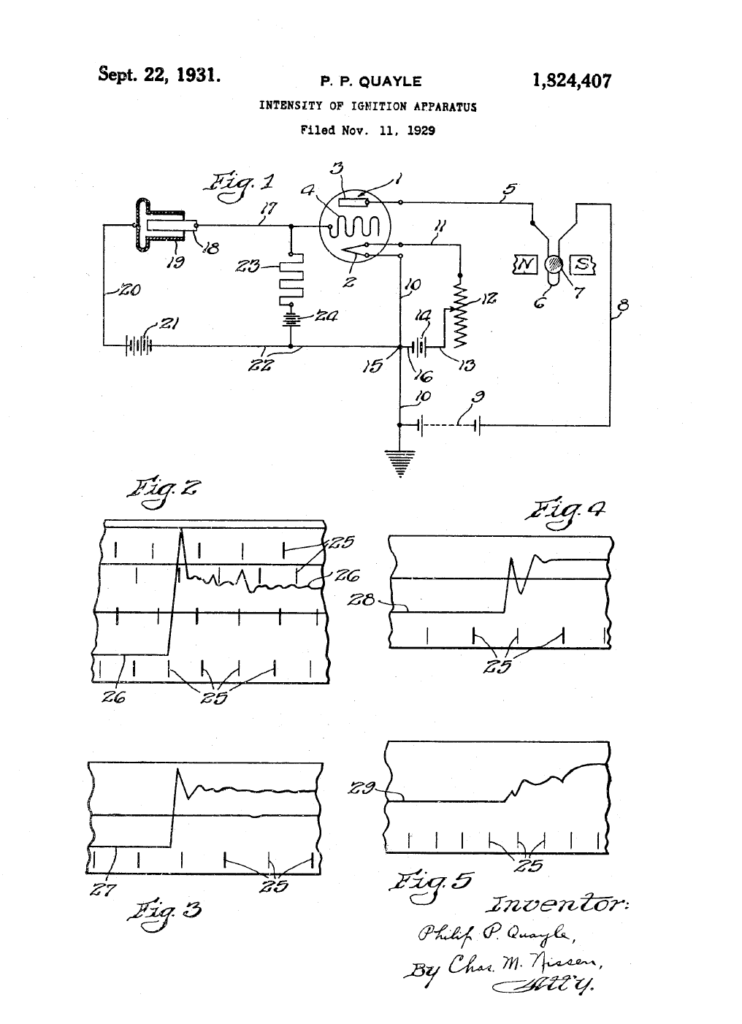
In 1930, Philip Quayle and fellow Peters’ employee Charles Holden developed the solution: the “movie blank” (Patent No. 1,804,986). The invention was a blank cartridge that would provide the smoke and flash and “would also produce a sound wave of the characteristic quality of a shot but at such a reduced amplitude that it would not damage the delicate recording apparatus.” The invention created a “cartridge inside a cartridge.” An outer shell or case simulated the shape of a loaded ball cartridge, with an open front end. An inner shell, which included a primer, powder charge and wad, was smaller than the outer case. “The outer case provides an explosion chamber larger than the charge.”
The blank cartridges could be made to work in rifles and handguns of at least five different calibers. These became known as the “Peters 5-in-1 Movie Blank” and were the most widely used blank cartridge for westerns and gangster movies of the 1930s, continuing use in movies until the 1970s.
Gone Too Soon
As a scientist and scholar, Quayle shared his knowledge with the world. His scientific papers were published in prestigious publications, like Physical Review, Nature and the Journal of the Franklin Institute. But he continued to publish articles on the same subjects for his sportsmen and military colleagues at the same time. Between 1925 and 1930, he published at least nine articles in the American Rifleman, as well as others in National Sportsman, The Military Engineer, Army Ordnance and The Coast Artillery Journal.
But Philip Quayle’s career trajectory suddenly collided with an unforeseen obstacle. On Valentine’s Day 1931, he was admitted to the hospital with “paralytic ileus,” an intestinal paralysis causing a blockage. Ileus can be can be a primary ailment or the symptom of other abdominal problems, so 2 days later he had surgery, and his appendix was removed. Even today, one treatment option for ileus is simply to control the pain and wait, but lack of improvement led to second abdominal surgery after 2 more days. Then on February 28, one week after his initial admission, Philip died—10 days short of his 37th birthday—leaving a widow and two young children.
His untimely death was noted in scientific journals in the United States and abroad. An April 1931 American Rifleman magazine obituary read:
As we go to press we learn (but without any particulars) of the recent death of Dr. [sic] Philip P. Quayle, who left the Bureau of Standards two or three years ago and joined the research laboratory staff of the Peters Cartridge Company. Dr. Quayle was perhaps best known to our readers for his interesting and illuminating spark-photography of firearms in action and of bullets and shot charges in flight.
The incorrect, but understandable, assumption that Philip held a doctorate degree was a testament to the brilliance his work conveyed. A full obituary followed in the June 1931 edition. As it said:
Captain Quayle was first and foremost a most highly educated and talented scientist. And fortunately for the shooting fraternity, he devoted his unusual ability almost exclusively to investigations relating to firearms. *** Captain Quayle’s work forms a contribution to ballistic science which will remain forever a monument to his memory.
For his technical achievement, the Royal Photographic Society of Great Britain awarded him the Society’s Medal in 1927, and his spark photographs of a bullet in flight were made a permanent exhibit of the National Academy of Sciences. His photos also became appreciated as an art form. Original Philip Quayle gelatin-silver spark photographs have been sold as works of fine art, including a group of seven images of a bullet being shot from a revolver auctioned in 2009 for over $5,000.
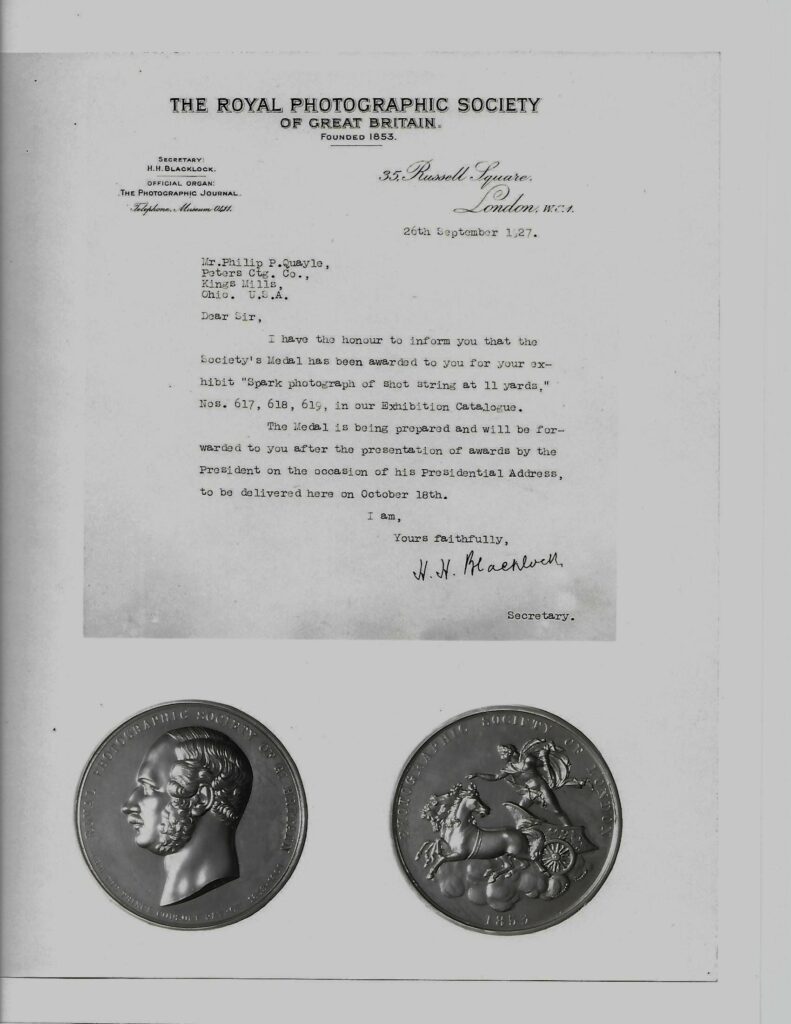
The Peters Cartridge Company continued to distribute free informational pamphlets with Quayle’s spark photography, like “Visible Ballistics” in 1933, “What Happens After the Shot is Fired?” in 1928 and “From Trigger to Target” in 1930. His spark photographs and references to “Sparkography” appeared in Peters’ advertising and promotional materials throughout the 1930s. When Remington/DuPont bought Peters in 1934, it continued to use Quayle’s research, spark photography lab and other unique testing instruments.
His research in external ballistics quantified previously unknown physical phenomena and disproved false assumptions, laying a new foundation for industry-wide improvements in ammunition design and manufacturing. Quayle had begun working on what was to become a revolutionary device in its time: a piezo-electric gauge for measuring chamber pressure. It was finished after his death and remains the industry-standard instrument today. Philip Quayle’s spark of genius had only just begun to flame when it was snuffed out—far too soon. We can only wonder what else could have come from his career had it reached full blaze.
Philip Quayle’s spark of genius had only just begun to flame when it was snuffed out—far too soon. We can only wonder what else could have come from his career had it reached full blaze.
| This article appeared in Small Arms Review V24N9 (November 2020) |



